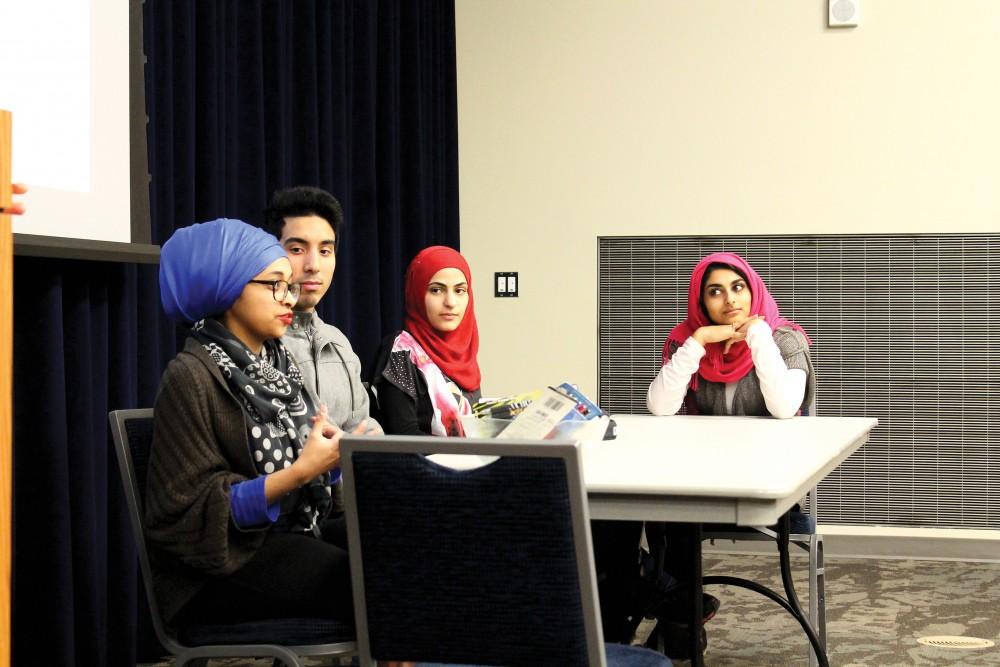MSA holds second annual ‘Wear a Hijab Day”

GVL / Emily Frye Amina Mohamed
Mar 23, 2015
The Muslim Student Association handed out 100 Laker blue hijabs for the second annual “Wear a Hijab Day” on Thursday, March 19. Students who participated were encouraged to wear the scarf all day in order to see how others react to it.
Besides wearing the hijab throughout the day, students were encouraged to attend an event at the Mary Idema Pew Library where they could discuss their experiences with other students. Members of the MSA also presented some historical information related to religious and non-religious headwear.
Nargilya Gasanova, a GVSU graduate and ex-member of the MSA, led the discussion. She enticed discussion by providing cultural and religious background that encouraged discussion amongst audience members.
Students who participated in wearing a hijab said it increased the amount of attention they received. A woman in the audience said most people tried to be sneaky while looking at her, but she definitely noticed she was getting more attention than before.
Another audience member said he did not receive more stares than usual. He said he usually receives looks because of being African American, so wearing the hijab did not increase the attention others gave him.
While most of the discussion centered around attention, other audience members saw some benefits to wearing a hijab. Jenna Williams said the hijab made her feel different about her appearance – hair was no longer covering her face and it felt like she was fully exposing her features.
Gasanova, who doesn’t wear a hijab every day, said the hijab can help women feel more beautiful.
“As you cover your physical features, the accent, the focus stays on you,” Gasanova said. “On your character, on your words, on your actions, on your smile, and your eye contact and your habits and your kindness.”
Amina Mohamed, a member of the MSA, agreed that a hijab can help accentuate a woman’s beauty, but she wanted to make it clear that this doesn’t mean that women who don’t wear a hijab aren’t beautiful.
Growing up, Mohamed said she decided to wear a hijab because she wanted to imitate her mother. She would mimic her mother’s dress, so the hijab was just another piece of the puzzle.
“To me, it wasn’t as much of a challenge just because the whole idea of covering my body was already something that I had built into my attire because my mom dressed like that,” Mohamed said.
Objectification of men and women was also at the center of the discussion. Gasanova contrasted the objectifying images of half-naked men and women found in advertising with the idea of a hijab being constricting.
Williams agreed that it was an interesting comparison. Wearing the hijab was a unique experience, but she was still being surrounded by objectifying images.
“Those photos are everywhere,” Williams said. “Men and women feel like they have to live up to that – they need to look like that.”
All of this plays into how our culture sees itself, Williams said. Advertisements have altered the perception of what humans should look like, so when people don’t look like that, it can create a disparity.
The MSA plans to make “Wear a Hijab Day” a yearly event.






















